 |
Picks is a monthly sampling of Japan's art scene, offering short reviews of exhibitions at museums and galleries in recent weeks, with an emphasis on contemporary art by young artists. |
 |
 |
|
|
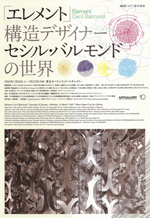 |
 |
 |
 |
Cecil Balmond: Element
|
| 16 January - 22 March 2010 |
Tokyo Opera City Art Gallery
(Tokyo) |
 |
| Cecil Balmond is more than just a structural designer. In his collaborations with architects around the world, it is as often as not his radical designs, heavy on fractals and organic shapes, that define the structure of the finished project. What gives this show extra allure is that each project is summarized on panels at the end, making it an exhibition of the conceptual thinking process as much as of architecture. |
|
|
 |
 |
 |
 |
| Noh Masks and Costumes |
| 2 January - 14 March 2010 |
Okura Museum of Art
(Tokyo) |
 |
| Noh theater, which evolved from the earlier Sarugaku during the Muromachi period (1336-1573), survives today as Japan's preeminent traditional dramatic form. Noh was especially popular with the samurai class, and its shogun and daimyo patrons were instrumental in preserving it into the modern era. Located in the Shukokan building on the premises of Tokyo's Hotel Okura, the museum displays the many Inshu and Ikeda masks and Bizen and Ikeda costumes in its possession. |
|
|
|
|

|
 |
 |
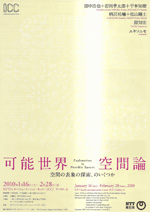 |
|
Exploration in Possible Spaces |
| 16 January - 28 February 2010 |
NTT InterCommunication Center
(Tokyo) |
 |
| The ICC Metaverse Project of telecommunications giant NTT invited various artists to apply their talents to the 3D virtual spaces on the Internet known as metaverses. Featured are Tomohiro Tachi's "Architectural Origami," Yuusuke Karasawa and Takashi Matsuyama's "City of Permanently Shifting Center," Hiroya Tanaka, Kotaro Iwaoka and Tomoki Hiramoto's "Open (Re)source Furniture Ver.1," and the art unit exonemo's computer display-manipulation installation. |
|
|
 |
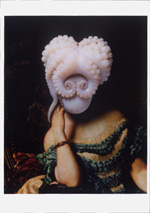 |
|
|
Yumiko Utsu: OUT of ARK 2 |
|
|
G/P Gallery
(Tokyo) |
 |
| Photographer Utsu's work, which blends equal parts kitsch, pop, and the grotesque, has arrived at a new level of assured stability in conception, execution and technique. Here she fluently appropriates the styles of classical portraiture in works that, while less showy than her past efforts, remind one of an assemblage of anthropological artifacts excavated from some ancient ruin. |
|
|
|
|
|
|
|

|
 |
 |
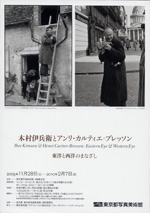 |
 |
| Ihei Kimura and Henri Cartier-Bresson: Eastern Eye & Western Eye |
| 28 November 2009 - 7 February 2010 |
Tokyo Metropolitan Museum of Photography
(Tokyo) |
 |
| Bringing together works by the two great photographers from the collections of museums throughout Japan, this show eloquently conveys the commonalities as well as differences in their styles (Kimura's casual approach to composition vs. Cartier-Bresson's highly geometrical arrangements, for example). On the day this reviewer went (a national holiday, granted), the gallery was thronged, and justifiably so. |
|
|
 |
 |
| Arts of the Ainu: A World Created with the Kamui |
| 23 November 2009 - 11 January 2010 |
The Museum of Kyoto
(Kyoto) |
 |
| Featuring 215 items from the collection of the Russian Museum of Ethnography, this exhibition highlights the artistry of the images and patterns found on Ainu clothing and tools. The embroidery on fabric and the patterns carved on knives and other implements are not merely beautiful, but speak powerfully of the meticulous, time-consuming effort that went into these creations, and of the loving care with which they were preserved. |
|

|
 |
 |
 |
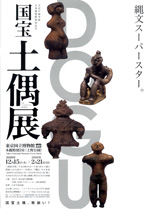 |
|
| The Power of Dogu |
| 15 December 2009 - 21 February 2010 |
Tokyo National Museum
(Tokyo) |
 |
| The unglazed clay figurines known as dogu date back to the early Jomon Period, around 13,000 years ago. These human or animal effigies, conspicuous for their exaggerated, often whimsical features and poses, boast a broad range of expression: they raise their hands nonchalantly skyward, or have huge eyes that bug out, alien-like, or represent women on the verge of childbirth. Known also as "figures of prayer," the dogu are thought to give form to the spiritual beliefs of the Jomon people. Featuring 67 such objects, among them three National Treasures, this show returned to Japan after a run last fall at the British Museum. |
|
|
|
|
 |
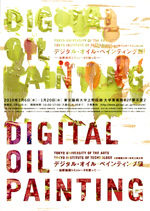 |
 |
| Digital Oil Painting |
| 6 - 20 January 2010 |
The University Art Museum, Tokyo University of the Arts
(Tokyo) |
 |
| Tokyo University of the Arts (Geidai) and Tokyo Institute of Technology have collaborated on the development of a computer paint program -- the Oil Painting Simulator, or OPS -- that (they claim) perfectly mimics the effect of painting with actual oils. Geidai's museum displayed works created with OPS in tandem with an announcement of the new software. For reasons unknown, the show was heavy on copies of the Mona Lisa. That aside, one of OPS's obvious virtues is its ability to artificially generate the random brushstrokes or splotches of mixed color that are normally treated as human error in a hand-painted work. |
|
|
|
|
|
|
 |
 |
| Dodo Exhibition |
8 - 10 January 2010
|
Gallery Kaido
(Tokyo) |
 |
| This show was a family project, bringing together the work of Shunji Dodo and his sons Arata and Takeshi -- all photographers. Arata Dodo's "Caspian Sea - Russia" series focuses on the city of Astrakhan, while Takeshi Dodo trains his camera on the mountain villages and shugendo ascetic practices of southern Nara Prefecture in "Yataragasu." Meanwhile, patriarch Shunji Dodo offers his monochromatic series "1968-1969: Iizuka - Tokyo" of images emblematic of late-sixties Japan, including the closure of the Iizuka coal mine and student riots in Tokyo. |
|
 |
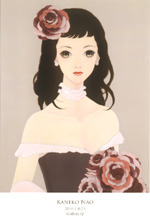 |
 |
| Nao Kaneko: Works |
| 8 - 23 January 2010 |
Gallery Q
(Tokyo) |
 |
| Large, impassive eyes are the hallmark of Kaneko's paintings of women. Not yet 25 herself, Kaneko manages to evoke, in the hairstyles and clothing of her subjects, the portraits of young girls painted by artists of the late 1920s like Koji Fukiya and Kiichi Tsutaya. |
|
|
|
|
 |
|